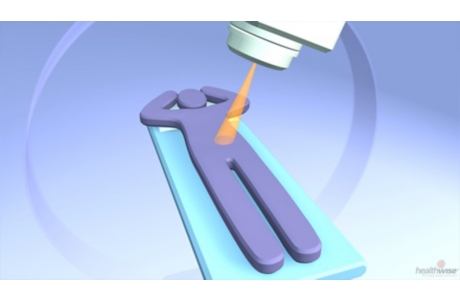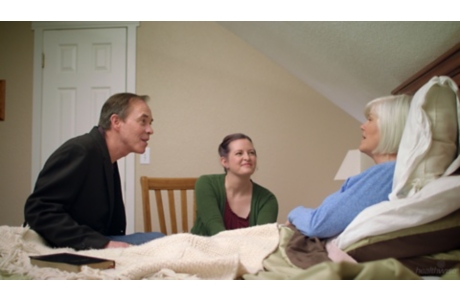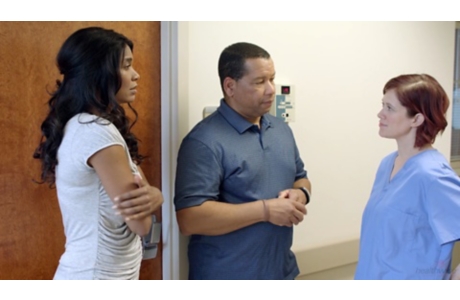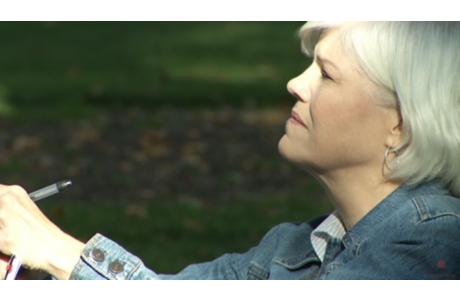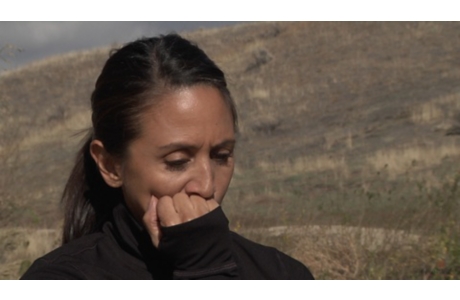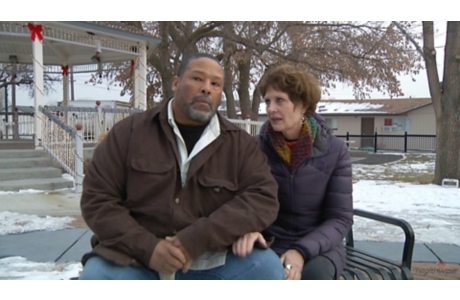Non-Hodgkin Lymphoma
Condition Basics
What is non-Hodgkin lymphoma (NHL)?
Non-Hodgkin lymphoma (NHL) is a type of cancer that begins in the lymph system in white blood cells called lymphocytes. When these cells become abnormal, they don't protect the body from infection or disease. They also grow without control and may form lumps of tissue called tumors.
NHL can start almost anywhere in the body. It may start in a single lymph node, a group of lymph nodes, or an organ such as the spleen. It can be slow-growing or fast-growing. And it can spread to almost any part of the body.
Treatments can work well for some people. For others, treatment may allow them to live longer than without treatment.
What causes it?
The cause of NHL is not known. The abnormal cell changes may be triggered by an infection or exposure to something in the environment. There is also a link between NHL and problems with the immune system. Or it may be linked to gene changes (mutations). NHL is not contagious.
What are the symptoms?
The most common symptom of NHL is a painless swelling of the lymph nodes in the neck, underarm, or groin. Other symptoms include fever, night sweats, feeling very tired, a cough or shortness of breath, and weight loss you can't explain. Itchy skin or reddened patches of skin can also be symptoms.
How is it diagnosed?
To diagnose NHL, you will get an exam. It includes checking the size of certain lymph nodes. Your doctor will take a piece of body tissue (biopsy) to diagnose NHL. Also, you will likely get blood or lab tests, or have imaging tests, such as a CT scan or MRI.
How is NHL treated?
Treatment for NHL is based on the type of lymphoma, the stage of the cancer, and other things, such as your overall health. Treatment options may include chemotherapy, immunotherapy, radiation therapy, and targeted therapy. In some cases, treatment may also include a stem cell transplant.
Health Tools
Health Tools help you make wise health decisions or take action to improve your health.
What Increases Your Risk
Some things can put you at risk for getting NHL. These things are called risk factors. But many people who get NHL don't have any of these risk factors. And some people who have risk factors don't get the disease.
Risk factors include:
- Being male. NHL is more common in men than in women.
- Being older. The likelihood of getting NHL increases as you get older.
- Having an impaired immune system. NHL is most common among those who have an impaired immune system, an autoimmune disease, or HIV or AIDS. It also occurs among those who take immunosuppressant medicines, such as medicines following an organ transplant.
- Having certain viral infections. For example, Epstein-Barr virus increases the risk of getting NHL.
- Having certain bacterial infections. For example, infection with Helicobacter pylori puts you at risk of lymphoma that involves the stomach.
- Being exposed to some pesticides or fertilizers, solvents, and other chemicals.
Symptoms
Symptoms of NHL include:
- A painless swelling of the lymph nodes in the neck, underarm, or groin. This is the most common symptom.
- Fever not caused by another health problem.
- Night sweats.
- Feeling very tired.
- Weight loss you can't explain.
- Itchy skin.
- Reddened patches on the skin.
- A cough or shortness of breath.
- Pain in the belly or back.
What Happens
With NHL, white blood cells in the lymph system grow out of control.
Lymph tissue is present in many areas of the body, so NHL can start almost anywhere. And it can spread to almost any part of the body, including the liver, bone marrow, and spleen.
NHL may be classified as:
- Slow-growing lymphomas, also called indolent lymphomas. They spread slowly and cause few symptoms.
- Fast-growing lymphomas, also called aggressive lymphomas. They spread quickly and can cause severe symptoms.
Over time, lymphoma cells may replace the normal cells in the bone marrow. When bone marrow fails, your body can't produce red blood cells that carry oxygen, white blood cells that fight infection, and platelets that stop bleeding.
How NHL affects you and how long you will live depends on many things. These include the type of NHL you have, the stage of the disease when you were diagnosed, and your response to treatments.
When to Call a Doctor
Call your doctor to schedule an appointment if you have any symptoms, such as:
- Painless swelling in the lymph nodes in the neck, underarm, or groin.
- Unexplained fever.
- Drenching night sweats.
- Extreme fatigue.
- Unexplained weight loss in the past 6 months.
- Itchy skin.
- Cough or shortness of breath.
- Pain in the belly or back.
If you have been diagnosed with cancer, be sure to follow your doctor's instructions about calling when you have problems, new symptoms, or symptoms that get worse.
Exams and Tests
To diagnose NHL, your doctor will do a physical exam and ask you questions about your health. The exam includes checking the size of your lymph nodes in your neck, underarm, and groin.
Your doctor will take a piece of body tissue (biopsy) to diagnose NHL. The tissue usually is taken from a lymph node. You may have other tests to find out what kind of NHL you have.
Your doctor also will likely order:
- Blood tests.
- Imaging tests, such as a CT scan, MRI, or PET scan.
- Lab tests, such as flow cytometry. These are used to check the types of cells in a biopsy sample. These tests help your doctor find out the type of lymphoma.
- Lumbar puncture (also called a spinal tap). This is used find out whether lymphoma cells are in the fluid that surrounds your brain and spinal cord.
Learn more
Watch
Treatment Overview
Treatment for NHL is based on the type of lymphoma, the stage of the cancer, and other things, such as your overall health. Treatment options may include chemotherapy, immunotherapy, radiation therapy, and targeted therapy.
If the cancer comes back, treatment may also include a stem cell transplant. In some cases, a clinical trial may be a good idea.
For some people who have slow-growing (indolent) NHL, a wait-and-see approach to treatment may be the best option. Your doctor will watch your condition closely. You won't have treatment unless you're bothered by symptoms.
Your doctor will talk with you about your options and then make a treatment plan.
Medicines
Medicines may be used to control the growth of cancer cells and to relieve symptoms. Medicines used to treat NHL include:
- Chemotherapy.
These medicines kill fast-growing cells, including cancer cells and some normal cells.
- Immunotherapy.
This treatment helps your immune system fight cancer. It may be given in several ways. One type is CAR T-cell therapy in which a person's T cells are treated in a lab so they are more able to attack cancer cells.
- Targeted therapy.
These medicines target cancer cells and may cause less harm to normal cells. They help keep cancer from growing or spreading.
One type of medicine may be used alone. Or it may be combined with another medicine or another type of treatment. For example, immunotherapy may be used with radiation therapy.
Radiation therapy
This uses high-dose X-rays to destroy cancer cells and shrink tumors. It may be the treatment of choice for NHL that is slow-growing and in a small area (localized).
Treatment for recurrent cancer
Sometimes NHL comes back after treatment. This is called recurrence or relapse. The treatments listed above are also used for recurrent NHL. Other options include:
- Stem cell transplant.
This replaces damaged cells with healthy stem cells. They help your bone marrow make healthy blood cells. The stem cells may come from your own bone or blood or from a donor.
A stem cell transplant may be done to restore the bone marrow after high-dose chemotherapy or whole-body radiation.
- Clinical trials.
Clinical trials are research studies that test new treatments to find out how well they work. Your medical team can tell you if there's a clinical trial that might be right for you.
Learn more
Watch
Supportive Care
Palliative care is a type of care for people who have a serious illness. It's different from care to cure your illness, called curative treatment. Palliative care provides an extra layer of support that can improve your quality of life—not just in your body, but also in your mind and spirit. Sometimes palliative care is combined with curative treatment.
The kind of care you get depends on what you need. Your goals guide your care. You can get both palliative care and care to treat your illness. You don't have to choose one or the other.
Palliative care can help you manage symptoms, pain, or side effects from treatment. It may help you and those close to you better understand your illness, talk more openly about your feelings, or decide what treatment you want or don't want. It can also help you communicate better with your doctors, nurses, family, and friends.
End-of-life care
It can be hard to live with an illness that cannot be cured. But if your health is getting worse, you may want to make decisions about end-of-life care. Planning for the end of your life does not mean that you are giving up. It is a way to make sure that your wishes are met. Clearly stating your wishes can make it easier for your loved ones. Making plans while you are still able may also ease your mind and make your final days less stressful and more meaningful.
Learn more
Watch
Self-Care
- Take your medicines exactly as prescribed. Call your doctor if you think you are having a problem with your medicine.
- Eat healthy food. If you do not feel like eating, try to eat food that has protein and extra calories to keep up your strength and prevent weight loss.
- Get some physical activity every day, but do not get too tired.
- Get enough sleep and take time to do things you enjoy. This can help reduce stress.
- Think about joining a support group. Or discuss your concerns with your doctor, counselor, or other health professional.
- If you are vomiting or have diarrhea:
- Drink plenty of fluids to prevent dehydration. Choose water and other clear liquids. If you have kidney, heart, or liver disease and have to limit fluids, talk with your doctor before you increase the amount of fluids you drink.
- When you are able to eat, try clear soups, mild foods, and liquids until all symptoms are gone for 12 to 48 hours. Other good choices include dry toast, crackers, cooked cereal, and gelatin dessert, such as Jell-O.
- If you have not already done so, prepare a list of advance directives. Advance directives are instructions to your doctor and family members about what kind of care you want if you become unable to speak or express yourself.
Learn more
- Cancer: Controlling Cancer Pain
- Cancer: Controlling Nausea and Vomiting From Chemotherapy
- Cancer: Home Treatment for Constipation
- Cancer: Home Treatment for Diarrhea
- Cancer: Home Treatment for Fatigue
- Cancer: Home Treatment for Mouth Sores
- Cancer: Home Treatment for Pain
- Cancer: Home Treatment for Sleep Problems
- Cancer Support: Managing Stress
- Eating Well During Cancer Treatment
- Hair Loss From Cancer Treatment
Watch
Complementary Treatments
Some people use complementary therapies along with medical treatment. They may help relieve the symptoms and stress of cancer or the side effects of cancer treatment. Therapies that may be helpful include:
- Acupuncture to relieve pain and other symptoms.
- Meditation or yoga to relieve stress.
- Massage and biofeedback to reduce pain and tension.
- Breathing exercises to help you relax.
Talk with your doctor about any of these options you would like to try. And let your doctor know if you are already using any complementary therapies. They are not meant to take the place of standard medical treatment. But they may help you feel better and cope better with treatment.
Learn more
Watch
Getting Support
Relationships take on new importance when you're faced with cancer. Your family and friends can help support you. You may also want to look beyond those who are close to you.
- Reach out to your family and friends.
Remember that the people around you want to support you, and asking for help isn't a sign of weakness.
- Tell them how they can help.
Your friends and family want to help, but some of them may not know what to do. It may help to make a list. For example, you might ask them to:
- Run errands or pick up kids.
- Deliver meals or groceries to your home.
- Drive you to appointments.
- Go to doctor visits with you and take notes.
- Look for help from other sources.
Places to turn for support include:
- Counseling.
- Counseling can help you cope with cancer and the effect cancer is having on your life. Different types of counseling include family therapy, couples therapy, group counseling, and individual counseling.
- Your health care team.
- Your team should be supportive. Be open and honest about your fears and concerns. Your doctor can help you get the right medical treatments, including counseling.
- Spiritual or religious groups.
- These groups can provide comfort and may be able to help you find counseling or other social support services.
- Social groups.
- Social groups can help you meet new people and get involved in activities you enjoy. Focus on activities that bring you comfort, such as spending time outdoors or being with children.
- A cancer support group.
- Cancer support groups offer support and practical advice. You can hear others talk about:
- What it's like to live with cancer.
- Practical ways to manage your cancer treatment and its side effects.
- Ways to cope with your illness.
Learn more
Watch
Credits
Current as of: October 25, 2023
Author: Healthwise Staff
Clinical Review Board
All Healthwise education is reviewed by a team that includes physicians, nurses, advanced practitioners, registered dieticians, and other healthcare professionals.
Current as of: October 25, 2023
Author: Healthwise Staff
Clinical Review Board
All Healthwise education is reviewed by a team that includes physicians, nurses, advanced practitioners, registered dieticians, and other healthcare professionals.
This information does not replace the advice of a doctor. Healthwise, Incorporated, disclaims any warranty or liability for your use of this information. Your use of this information means that you agree to the Terms of Use. Learn how we develop our content.




